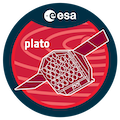Speaker
Description
Most detected transiting planets have orbits which would fit within that of Mercury. This host star proximity means that the properties of these planets undergo significant changes due to stellar irradiation and interactions. In contrast, temperate planets with longer orbital periods are less affected, offering crucial insights into their formation and migration histories. Characterizing transiting temperate planets is a key missing piece in the exoplanet puzzle. In this talk, I report the detection and characterization of three new transiting temperate Jupiters with orbital periods larger than 100 days, thanks to a three-year ground and space-based photometric and radial velocity survey. Combining precise masses, radii, and ages with a state-of-the-art planetary evolution model, I infer the metal enrichment of the newly discovered temperate giants and explore their influence on the mass-metallicity correlation of giant planets. This work is also a stepping stone for PLATO as the follow up of single transit candidates will be key in order to detect transiting Earth analogs.

